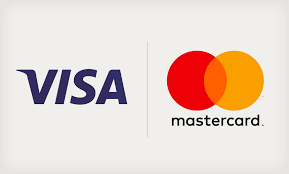Norfolk Developers are excited to announce their programme for Nor(DEV):con‘s schools day, put together by Paul Foster, Microsoft in consultation with many members of faculty from different schools across Norfolk & Norfolk Developers themselves.
09:00 Arrival/Opening keynote segment (20 Minutes allowing for arrivals)
09.20 Paul Grenyer & Paul Foster Open event
09.25 Keynote- “Whoops”, and other classic programming phases by Dom Davis, (@Idomdavis).
Schools now teach algorithms and programming from the age of 5, so it’s hardly rocket science. Except when it is. And even when it isn’t it goes wrong a lot. I should know, I’ve been responsible for some of that wrongness. The trick is to learn from your mistakes, and to make sure that when it goes wrong, it does so in a way that no one will notice, and definitely not in the ways I’m going to spend this session talking about.
10:00 break
10:25 Guided technology task (2 hour activity)
In this activity students will learn how to blend software and hardware to build a modern digital device. Working in pairs, students will learn how the internet of things uses sensors and actuators to build intelligent feedback systems that can interact with the real world.
12:30 Lunch. (Allocated 1 hour)
Lunch is not provided.
A loop of inspirational technology videos will run during the lunch break to give students further ideas.
13:30 STEM student challenge (3 hour activity)
The STEM Student Challenge aims to help students connect the dots between the STEM subjects they study today and the impact those subjects could have on their ability to be part of the next generation of technology heroes. We invite students to use their knowledge of STEM subjects and marry it with research and creativity to imagine and depict their vision of technology in 2027.
The challenge is open to teams of 4-6 students in years 10 to 13. The challenge is to select one of the following categories and come up with an original technology idea that could exist in that field in 10 years’ time.
- Artificial intelligence and virtual reality
- Data Security
- Healthcare
Students must depict or “pitch” their idea in the form of a two-minute video.
1. Form a team. Teams should be made up of 4-6 students.
2. Choose a category and start imagining! We’re surrounded by technology, whether it’s in our pockets, our homes or our schools, and it’s only going to become more central to our daily lives. Microsoft is working in areas that will change the way we work, play and look after ourselves and we want you to think about how these might look 10 years from now. So choose from one of the categories below, and get to work – come up with an original idea for a future technology. Challenge entries should reflect your team’s creativity and your knowledge of your chosen category.
You are part of the generation that will help bring the technologies of 2027 to fruition, so in doing this challenge, we hope you’ll think more about how you can be part of driving the exciting world of tomorrow’s technology. Each team should choose one category and submit one idea only.
3. Create a video. Create a video that depicts your idea. The tech doesn’t exist yet, so you’ll have to get creative! Make a science show, do a skit, demo a mock up prototype using available materials – just keep it under two minutes. Please make sure that your team is familiar with the judging criteria which you can find in this document.
4. Submit your entry. Upload your video to OneDrive by 16:20
Video Entry Judging Criteria
1. Originality of idea Does the technology idea show creative thinking? Does it stand out from the crowd? Is the idea unique and original?
2. Quality of research methods Have the team shown the research that they have undertaken to lead them to their technology idea? Does the video demonstrate that the team has researched and understood the category they have chosen?
3. Understanding of STEM subjects How well does the video entry demonstrate a sound knowledge in one or more STEM subjects?
4. Quality of presentation and clarity of idea Is the video well presented, clearly describing the future technology idea? Have the team presented their idea in a creative, interesting and entertaining way?
5. Is it feasible? Have the students demonstrated how their technology idea could be possible in the year 2027?
6. Evaluation of the process Have the team demonstrated what they’ve learned from the experience of coming up with their technology idea?
7. Judging will occur after the event with schools being notified of results by the end of February
16:30 Close (dependent on lunch break length and required school departure time)



